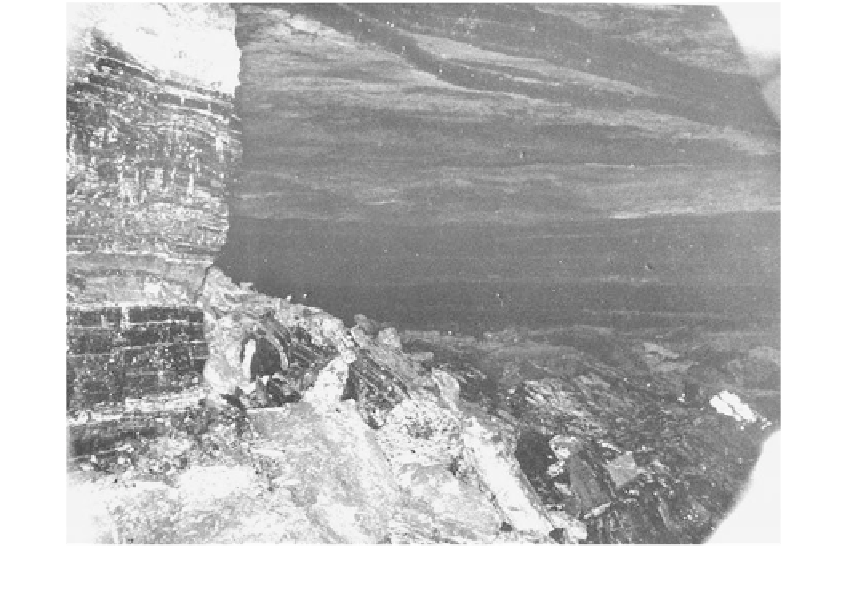Environmental Engineering Reference
In-Depth Information
Mine Collapse Mechanisms
General
Three possible mechanisms which cause mine collapse are roof failure, pillar failure, or
pillar foundation failure.
Roof Failure
Roof stability depends upon the development of an arch in the roof stratum, which in turn
depends on the competency of the rock in relation to span width. In weak, fractured sed-
imentary rocks, this is often a very difficult problem to assess, since a detailed knowledge
of the engineering properties and structural defects of the rock is required, and complete
information on these conditions is difficult and costly to obtain. If the roof does have
defects affecting its capability, it is likely that it will fail during mining operations and not
at some later date, as is the case with pillars.
Roof support does become important when the pillars weaken or collapse, causing the
span length to increase, which in turn increases the loads on the pillars. Either roof or pil-
lars may then collapse.
Pillar Failure
The capability of a pillar to support the roof is a function of the compressive strength of
the coal, the cross-sectional area of the pillar, the roof load, and the strength of the floor
and roof. The pillar the cross-sectional area of the pillar may be reduced in time by weath-
ering and spalling of its walls, as shown in Figure 10.10, to a point where it cannot sup-
port the roof and failure occurs.
FIGURE 10.10
Spalling of a coal pillar in a mine room (Pittsburgh). (Photo courtesy of Richard E. Gray.)


